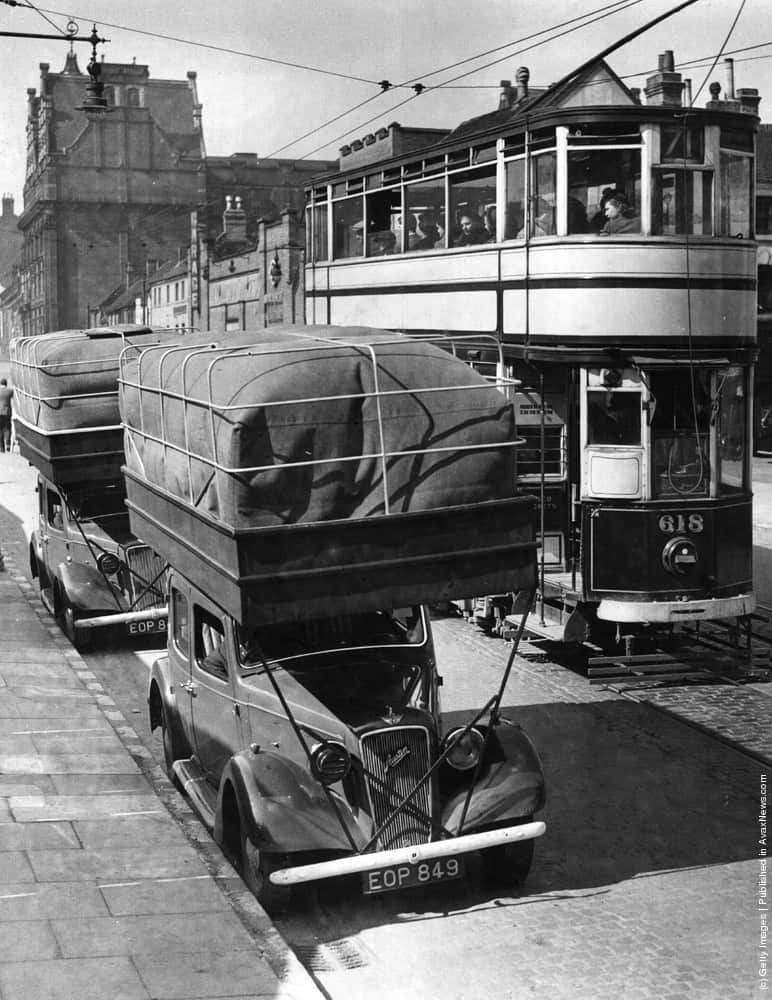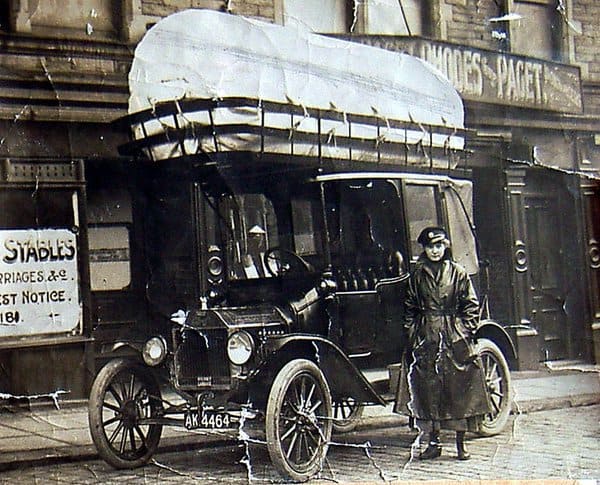Gas Taxi Background
A preclude to the gas taxi, horse-drawn hackney carriages for hire were famous in Paris and London as early as the 17th century. These carriages provided much-needed transportation, connecting people with far-away destinations cost-effectively. Passengers relied on these horse-drawn cars to get around without owning them. According to Wikki, the first public hackney coach for hire began in London in 1605. In 1625 carriages were available for hire from innkeepers in London and the first taxi rank was on the Strand outside the Maypole Inn in 1636. In 1635 the Hackney Carriage Act was passed by Parliament to legalize horse-drawn carriages for hire.
John Lee Automobile Engineers was an automotive engineering firm based in Keighley, England, during the 1920s. They operated a unique coal-gas-powered taxi cab, one of the first of its kind in the country. This car was cutting-edge technology at the time and stood out from standard gasoline-powered cars due to its lower cost. The gas bag on top of the John Lee Automobile Engineers taxi cab stored enough fuel to power it for up to 15 miles of driving. This was a remarkable feat given the technology of the time, as many cars were powered exclusively by gasoline and could only go a fraction of that distance on a single tank. (courtesy of taxi-library.org)

The gas bags on the roofs of the taxi lasted about 15 to 20 miles without a refill. A strong gust of wind would provide a rocky ride, one imagines. (A J O’Brien / Fox Photos / Getty Images 24 April 1940)]
Gas Taxi Phase Out
The coal gas taxi was a popular form of transportation in Paris and London for quite some time. However, due to advances in technology, the coal gas taxis soon became outdated. These vehicles used a fuel derived from burning coal, giving off a strong odor that filled the air. The byproducts of this fuel included carbon monoxide, sulfur dioxide, and other pollutants that could have been better for the environment.
With an undesirable fuel source, these taxis also had significant mechanical problems. Parts were often unavailable and frequently replaced—the limited number of passengers that could fit into a vehicle.
The fact that these taxis were not efficient or reliable led to their eventual replacement with newer models powered by diesel or gasoline engines. With cleaner burning fuels and more modern designs, these newer vehicles provided much better performance than their predecessors. They also allowed for greater passenger capacity and smoother rides due to improved suspension systems.
The coal gas taxi became outdated – its fuel source caused pollution issues, and its mechanics presented reliability problems. Fortunately, with technological advancements, much better alternatives evolved that help us travel cleanly and efficiently.

